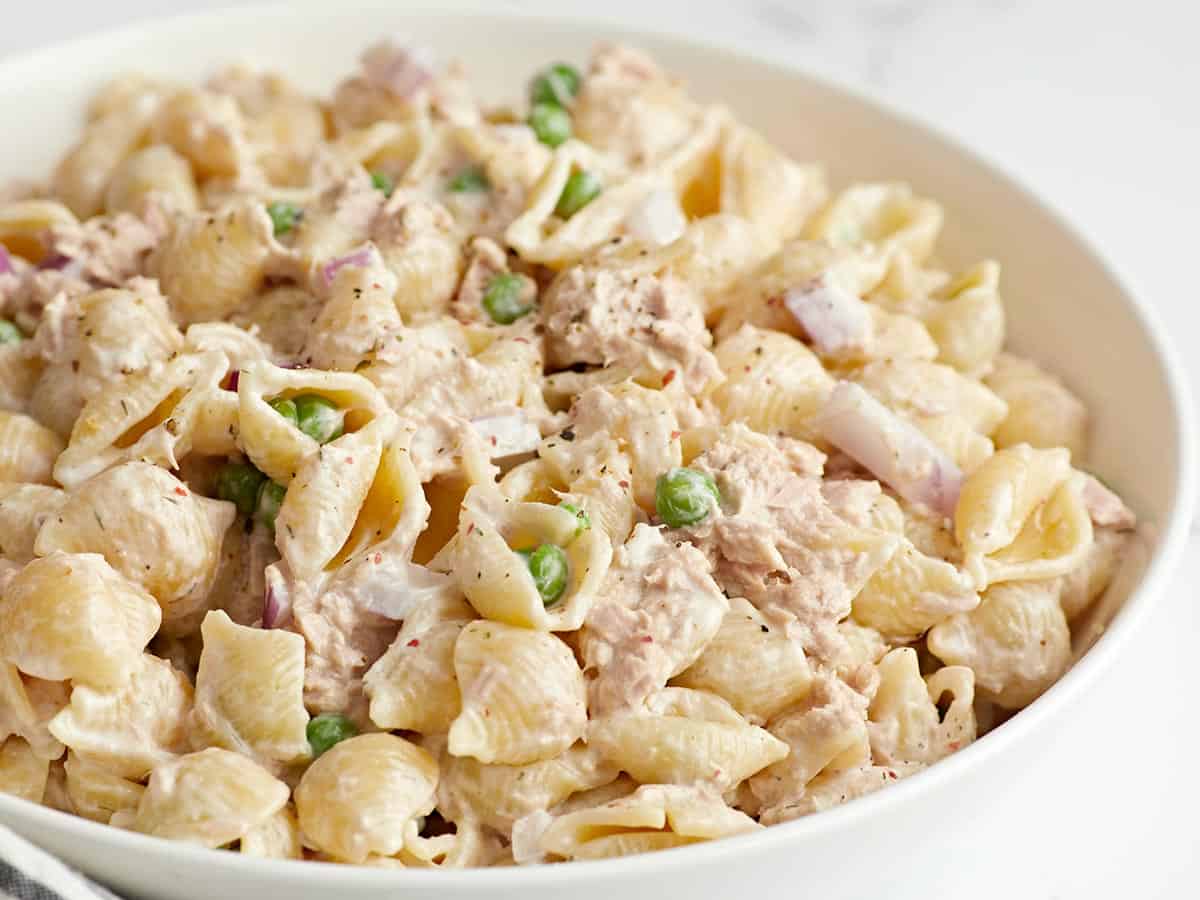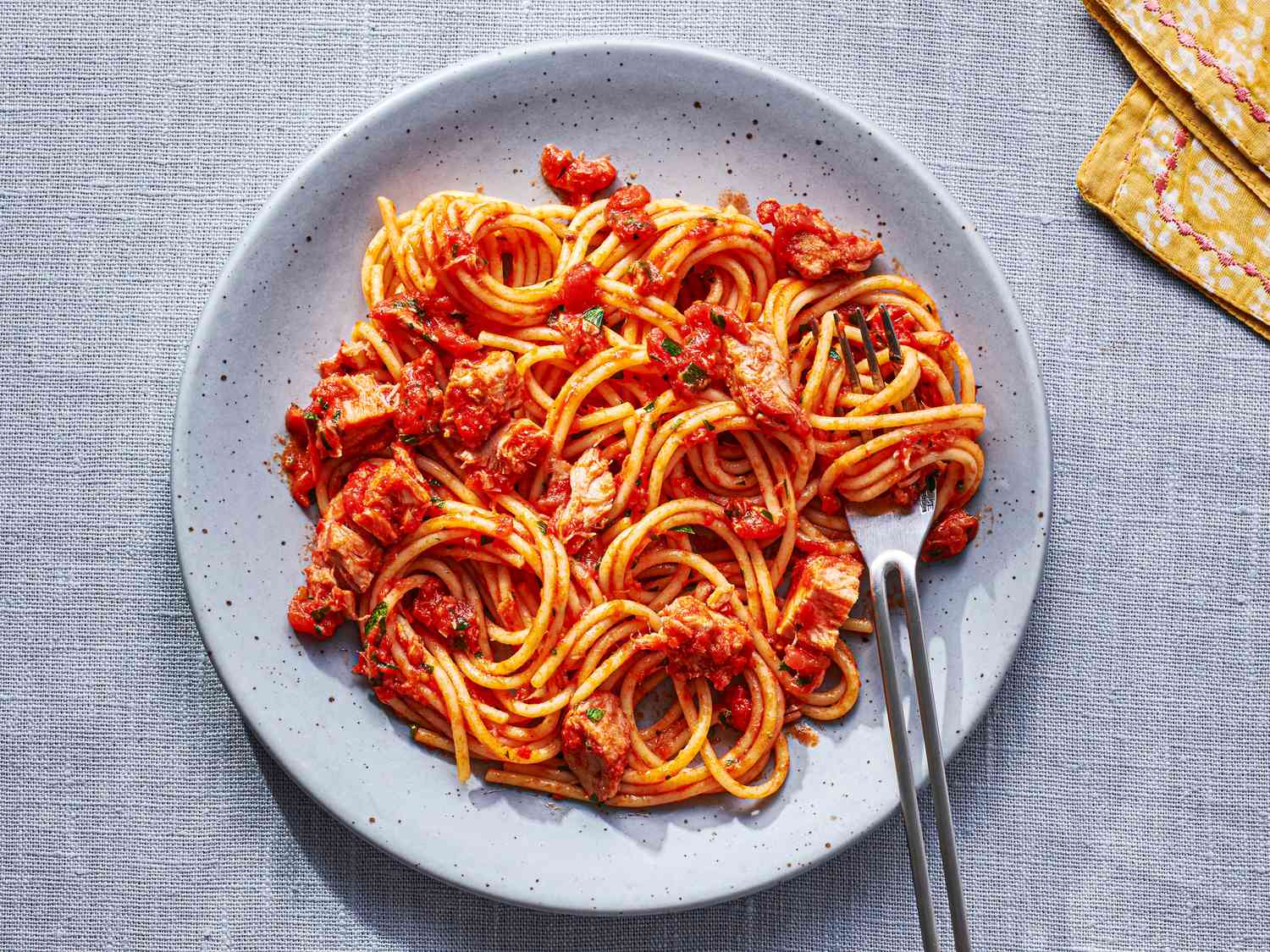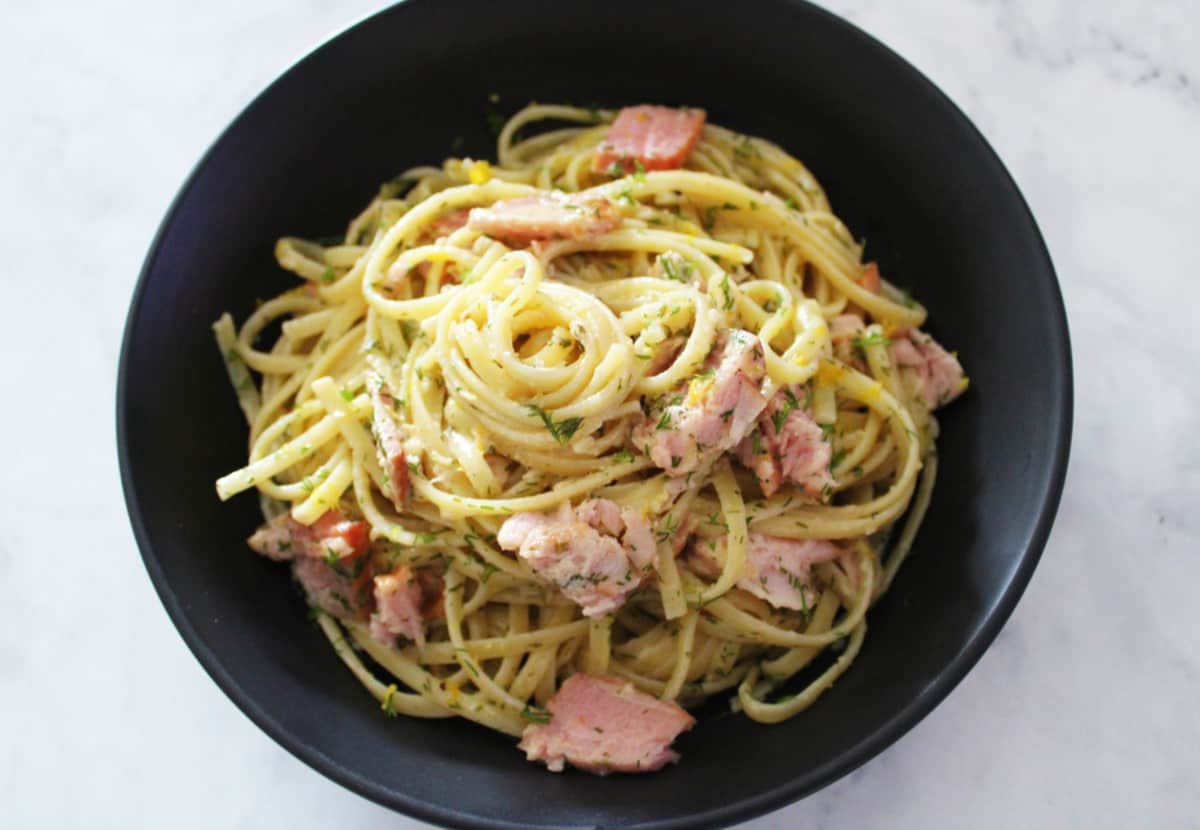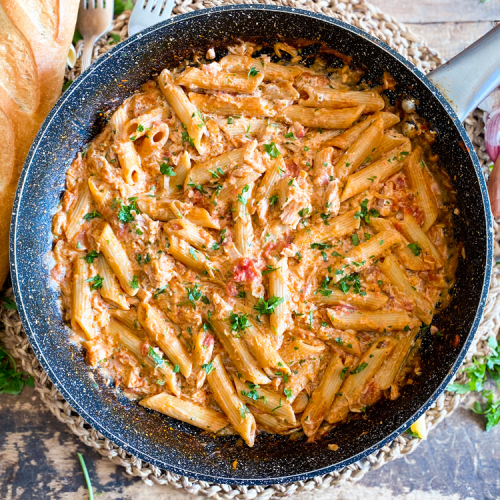When it comes to enjoying a delicious plate of tuna pasta, one question that often crosses our minds is, “How long does tuna pasta last?” Whether you’ve prepared a delectable tuna pasta salad for a picnic or a hearty tuna casserole for a cozy dinner at home, understanding the shelf life of your dish is crucial for both food safety and minimizing waste
Cooked pasta, when stored properly in the refrigerator, can typically last for 3-5 days. Further, it depends on factors such as the type of pasta, the sauce used, and storage conditions.
Now let’s get started and discover it without sacrificing flavor or quality.
Tips for Storage and Preservation

Cool it Quickly: After cooking, cool the tuna pasta as quickly as possible. This prevents the growth of harmful bacteria. You can place it in an ice bath or spread it out on a baking sheet for faster cooling before refrigeration.
Airtight Containers: Store it in airtight containers to prevent moisture loss and exposure to air, which can lead to drying out and flavor changes. Consider using containers with a good seal.
Refrigeration: In the refrigerator at a temperature of 40°F (4°C) or lower. Ensure your refrigerator maintains a consistent and safe temperature.
Label and Date: Label the containers with the date you cooked the pasta. This makes it easier to keep track of how long it has been stored.
Separate Ingredients: If you have separate components, like sauce and pasta, store them separately and combine them when serving. This prevents it from becoming soggy.
Check for Spoilage: Before consuming, always check for signs of spoilage, including unusual odors, off-putting texture, or any mold growth. If you notice any of these signs, discard the pasta.
Frequent Use: If you plan to store tuna pasta for a more extended period, consider freezing it. It can last for 2-3 months. Use airtight, freezer-safe containers and label them with the date.
Thawing Safely: When you’re ready to use frozen pasta, thaw it in the refrigerator overnight. Avoid thawing at room temperature, as this can promote bacterial growth.
Reheat Thoroughly: Whether you’re reheating a refrigerated or frozen one, ensure it is heated thoroughly to a safe temperature before consuming. Aim for an internal temperature of at least 165°F (74°C).
Individual Portions: If you anticipate not consuming the entire batch at once, consider storing it in individual serving portions. This reduces the need to repeatedly reheat and cool the entire dish.
Canned tuna nutrition
| Nutrient | Oil-Packed White Tuna | Water-Packed White Tuna |
| Calories | 331 | 220 |
| Total Fat (g) | 14.4 | 5.1 |
| Cholesterol (mg) | 55.2 | 72.2 |
| Sodium (mg) | 705 | 648 |
| Total Carbs (g) | 0 | 0 |
| Dietary Fiber (g) | 0 | 0 |
| Sugar (g) | 0 | 0 |
| Protein (g) | 47.2 | 40.6 |
| Selenium (% DV) | Not specified | 205% DV |
| Vitamin B12 (% DV) | Not specified | 84% DV |
| Vitamin B3 (Niacin) (% DV) | Not specified | 62% DV |
| Phosphorus (% DV) | Not specified | 30% DV |
| Vitamin B6 (% DV) | Not specified | 22% DV |
| Vitamin D (% DV) | Not specified | 17% DV |
| Magnesium (% DV) | Not specified | 14% DV |
| Vitamin E (% DV) | Not specified | 10% DV |
| Iron (% DV) | Not specified | 9% DV |
| Potassium (% DV) | Not specified | 9% DV |
| Zinc (% DV) | Not specified | 8% DV |
| Copper (% DV) | Not specified | 7% DV |
Benefits of Canned Tuna
Protein Richness and Long Shelf Life: Canned tuna not only offers a readily available source of high-quality protein, crucial for the body’s structural components but also boasts an extended shelf life. This longevity ensures you have a dependable and convenient meal or snack option in your pantry at all times.
Appetite Control and Low Calories: It offers a dual benefit by helping you feel full for longer due to its protein content, which reduces the hunger hormone, ghrelin. Further, it provides essential nutrients like protein and omega-3s without contributing significantly to your daily calorie intake, making it an excellent choice for weight management and calorie control.
Affordability and Convenience: Canned tuna is not only an economical source of protein that fits various budgets but also a hassle-free meal option. Its affordability and convenience make it a practical choice for individuals with busy schedules.
Source of Essential Vitamins and Minerals: Tuna, both fresh and canned, provides essential vitamins and minerals, including vitamin B12, niacin (B3), calcium, magnesium, and vitamin D, supporting various aspects of health.
Cardiovascular and General Health Benefits: The omega-3 fatty acids in tuna can have a wide range of health benefits, including reducing the risk of heart disease by lowering LDL cholesterol levels, preventing vision problems, such as dry eye, and potentially decreasing the risk of certain types of cancer.
Mercury and Sustainability Concerns with Tuna

Tuna can be a bit tricky due to mercury and sustainability worries.
Mercury and Safe Tuna Intake:
For Adults: If you’re a grown-up, eating high-mercury fish regularly can lead to more mercury in your body and make you feel tired. So, try not to have more than one small can (about 4 ounces) of canned albacore tuna each week. Go for light or skipjack tuna instead.
For Kids: Mercury can be bad for kids, especially their growing brains. If your child is 2 to 10 years old, they can safely eat a small amount (1 ounce) of low-mercury fish like light or skipjack tuna two to three times a week. But for babies, it’s best to ask your doctor about giving them.\
For Pregnant or Nursing Moms: If you’re expecting or breastfeeding, it’s smart to steer clear of high-mercury fish. Limit your food to no more than a small can (about 4 ounces) each week. But you can enjoy light or skipjack tuna without any worries, up to two to three times a week.
Allergies: Some individuals may be allergic to fish, including tuna. Fish allergies can range from mild to severe, and consuming tuna can trigger allergic reactions in sensitive individuals. It’s essential to be aware of any allergies and avoid tuna if you have a known fish allergy.
Sustainability Issues:
Its popularity means we might be catching too much, especially certain types like Western Pacific blue-eye and Indian Ocean yellowfin tuna. Overfishing messes up the ocean and can hurt people who rely on tuna for food.
Moreover, to be more environmentally friendly, check for a label called the Marine Stewardship Council (MSC) when you buy canned tuna. It means it was caught in a way that takes care of the sea, so it’s a better choice for our planet.
FAQs
Can you eat tuna pasta after 1 day?
Yes, tuna pasta is generally safe to eat after being stored in the refrigerator for one day.
Can you eat tuna pasta after 2 days?
Yes, Tuna pasta can be consumed within two days of refrigeration, but it’s best to ensure proper storage and reheating.
Can you eat tuna pasta after 3 days?
Yes, Tuna pasta should be safe to eat within three days if stored and handled correctly.
Can you eat tuna pasta after 4 days?
Yes, Tuna pasta may still be safe to eat on the fourth day if it has been stored at the proper temperature (refrigerated) and shows no signs of spoilage.
Can you eat tuna pasta after 5 days?
Yes, While consuming tuna pasta on the fifth day is possible if it has been stored well, it’s essential to check for any signs of spoilage, like an off odor or changes in texture.
Can you eat tuna pasta after 6 days?
No, It’s generally not recommended to eat tuna pasta that has been stored for six days, as it may not be safe due to the risk of spoilage.
Can you eat tuna pasta after 7 days?
No, Eating tuna pasta after seven days is not advisable, as it may no longer be safe to consume. It’s important to prioritize food safety.
Can I eat a can of tuna in a day?
Yes, it’s generally safe to eat a can of tuna in a day. Canned tuna is a convenient source of protein and nutrients. However, it’s essential to consider your overall diet and any dietary restrictions, such as mercury concerns, when consuming large amounts of tuna.
What type of tuna is used in canned tuna?
Canned tuna typically includes various types of tuna, such as skipjack, albacore, or yellowfin, depending on the product. The specific type used can vary between brands and product lines.
Is tuna fish Paleo-friendly?
Yes, Tuna particularly wild-caught and sustainably sourced varieties, can be considered Paleo-friendly. It’s a good source of protein and healthy fats. However, the Paleo diet varies among individuals, so some adherents may choose to include or exclude certain foods based on their interpretation of the diet.
Is tuna a good source of protein?
Yes, tuna is an excellent source of dietary protein. It provides high-quality protein necessary for various bodily functions, including tissue repair and muscle maintenance. It’s a popular choice for individuals seeking to increase their protein intake.
Final Words
The longevity of tuna pasta in your refrigerator is contingent on proper storage and handling. Generally, it’s safe to consume within the first few days, up to about three to five days, as long as it’s refrigerated promptly and maintained at the appropriate temperature.
Further, beyond this timeframe, there is an increasing risk of spoilage and potential health concerns. It’s essential to use your judgment, employ good food safety practices, and be attentive to any signs of deterioration, such as unusual odors or changes in texture.
To ensure the safety and quality of your tuna pasta, consuming it within the recommended timeframes is advisable.










